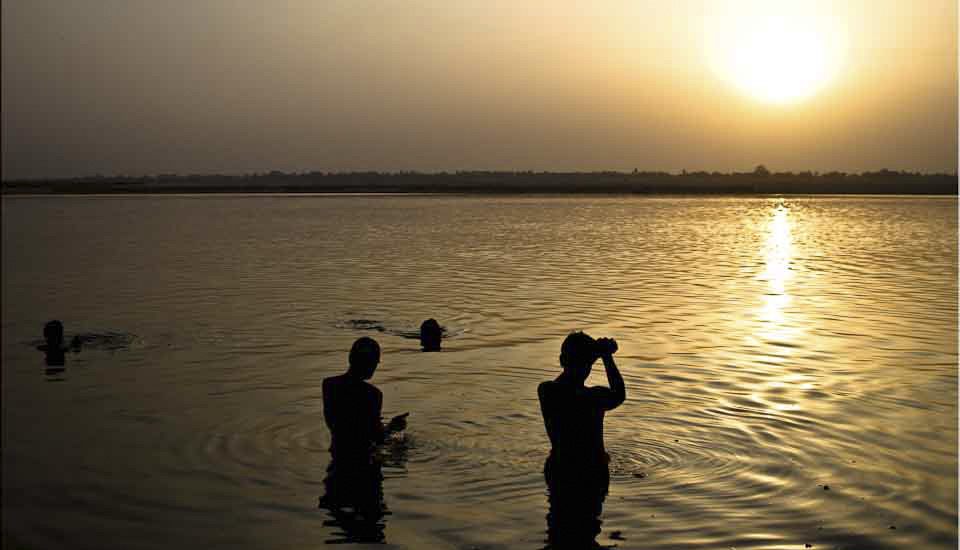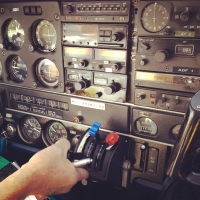.jpg)
Puyupatamarca
Known as La Ciudad entre la Niebla – The City Above the Clouds, Phuyupatamarca was possibly my favourite of the many ruins along the Inca Trail.
Hiking the Inca Trail from Piscacucho, or Kilometer 82, to the Inca citadel city of Machu Picchu is an unbeatable experience.
The trail follows just a small part – 42 kilometers (26 miles) – of the much larger UNESCO-listed complex of roads, the Qhapaq Ñan – meaning ‘royal road’ in Quechua – built by the Inca over several centuries as a communication, trade, and defence network throughout the Andes Mountains.
Walking it requires a reasonable level of fitness: the rocky paths are steep and the days are long. From a starting point of around 2500 metres (8202 ft) above sea level, the track ascends to beyond 4200 m (13,800 ft), and more than a few people experience altitude sickness. The route rises over several mountain passes and through several types of Andean vegetation zones; it gives the walker access to remote villages and ancient Inca ruins of extraordinary beauty and complexity.
It also gave me a huge sense of accomplishment.
But, one needs to keep it in perspective! There is an annual Inca Trail marathon, and the quickest participant can finish in under six hours what took us four days to walk. And, our local porters carried many times the weight that we did, and were only ever slowed by bureaucracy: the steeply ascending mountain tracks did not phase them. Peruvian porters are a hardy lot!
When we walked the trail, back in 2006, there was an election in the country. As voting is compulsory, many of the seasoned porters were back in their respective villages, leaving us in the care of 18-year-old first-timers, who still did a superb job. Almost every meal stop, they beat us to the site, and we would arrive, exhausted, to find the meal tent already set up and ready to go. In the evenings, we’d reach camp to find our tents-for-two ready and waiting for us. Our arrival signalled the young men to go scurrying for pans of hot water so we could wash in our tents before dinner. The porters were ‘colour-coded’, wearing bibs according to the group they belonged to. Ours was ‘the green team’, and we thought they were fabulous.
Our second day on the walk (see: The Inca Trail, Day 2) had been particularly rugged. After that, the first half of day three was a piece of cake – up and down through beautiful countryside and magnificent archaeological ruins. While we saw lots of birds – sparkling violators, blue and white swallows, Inca wrens, and rufous collared sparrows – we didn’t meet Wellington Bear (the South American bear, or osode anteojos), whose family originated in these woods.
Unfortunately, because heavy rains had washed out a portion of track past the Sun Gate, our campsite for the night had to be changed, and we spent the afternoon walking down a steep, little-used gully trail to the railway tracks, where we walked along uneven rail ties and gravel (keeping an ear out, so as to avoid oncoming trains!), further testing joints and muscles. This took us into the town of Aguas Calientes (or, as the locals call it: Machu Picchu Town), where four of us decided to indulge in beers and pisco sours while waiting for the last two, who hobbled into camp with one of the guides well after dark.
Because we had successfully completed all the high-altitude sections of the walk, we were actually treated to wine with our dinner. After another fabulous meal (our chef was a wonder!), we fell into our tents knowing we would have to be up at 4:30 to break camp for the final ascent, straight up, into Machu Picchu itself.
.jpg)
Daybreak in the Andes
The early-morning sky over our campsite at Sayacmarca (3625 m / 11893 ft) turns pink. ‘Sayacmarca’ is sometimes translated as Town in a Steep Place. ‘Steep’ doesn’t begin to describe the trip to the toilet blocks!
.jpg)
Morning over the Vilcabamba Mountains
The sun isn’t fully up and it’s cold, but it is turning into a beautiful day. Pumasillo, or ‘puma claw’, is the snow-capped peak on the left.

Sayacmarca
As we drop down the trail, we can look back up at that almost inaccessible sacred Inca ruin.

Porter!
After dropping to about 3500 meters, we start climbing steeply again.

Red Team
We hear the call “Porters!” and the
red team comes through.

Above the Clouds
On the last rise, we enter the pass at Puyupatamarca (3640 m / 11942 ft) – “The City Above the Clouds”.

Triumphant
We are feeling so relaxed after the tough day the day before …

The Hill
… that we climbed an extra hill, just for fun!

Puyupatamarca (Phuyupatamarca) – Cloud-Level Town
The views are pretty amazing as well.

Ritual Baths at Puyupatamarca

Paddington Bear Forest
This is the ancestral home of the Andean bear, Tremarctos ornatus …

Walker and a Butterfly
… but we only ever spotted smaller creatures.

Down to Puyupatamarca
The down-hills can be as hard as the ups. Those bamboo poles we bought on Day 1 (see: The Inca Trail, Day 1) got a real workout!

Lines and Curves
I loved these ruins: they are written up as an example of the Inca philosophy of balance between humans and nature because of their complex hydraulic structures; I just loved the patina of moss on the curves of the ancient stones.

Taking in the View
The mountains and their cloud forests stretch out forever.

Wiñay Wayna (2700 m / 8858 ft)
The extensive agricultural terraces at Wiñay Wayna (Huiñay Huayna) – Forever Young – are seriously impressive, …

The Urubamba Gorge
… as are the views into the valley far below us

Salvia Dombeyi Lamiace
The giant Bolivian sage thrives at this 3000 m altitude.

Steps and Water Catchment
Thinking about the time and engineering …

Stairs
… that went into constructing these complexes is just mind-boggling!

Wall Detail – Wiñay Wayna

The Valley Below
Hard to believe, but by end of day, we’ll be back down there!

Up Wiñay Wayna
In the other direction, the terraces climb up forever.

Lizard on the Stones

Wild Orchid
Apparently Wiñay Wayna was named for an orchid that used to grow profusely in this area. I can’t actually tell you if this is one or not – there were many different varieties along the way.

View Down
From Wiñay Wayna, it is ordinarily a five-kilometre walk to Machu Picchu. Unfortunately, with part of the track washed out, we had to head down to Aguas Calientes for the night instead. After lunch at the restaurant, we descend through steep, rough terrain …

The Urubamba River at Choquesuysuy
… down to the swollen river below. From there, it was a a good two-hour walk along the railway tracks …

Aguas Calientes
… into the little town 9 km (5.5 miles) down the mountain from Machu Picchu.

Our Chef
This was our last meal with our trekking crew. Our wonderful chef came to take our applause; he really had prepared some fabulous meals!
Now that we were finally below the altitude sickness zone, we were treated to wine with our meal, which we all thoroughly enjoyed.
A hot shower might have been nice after all that exertion, but even though Aguas Calientes means Hot Waters, our campsite had none.
 Ah well. At least we were all in the same boat!
Ah well. At least we were all in the same boat!
Until next time,
¡Salud!
Photos: 09April2006


































.png)

